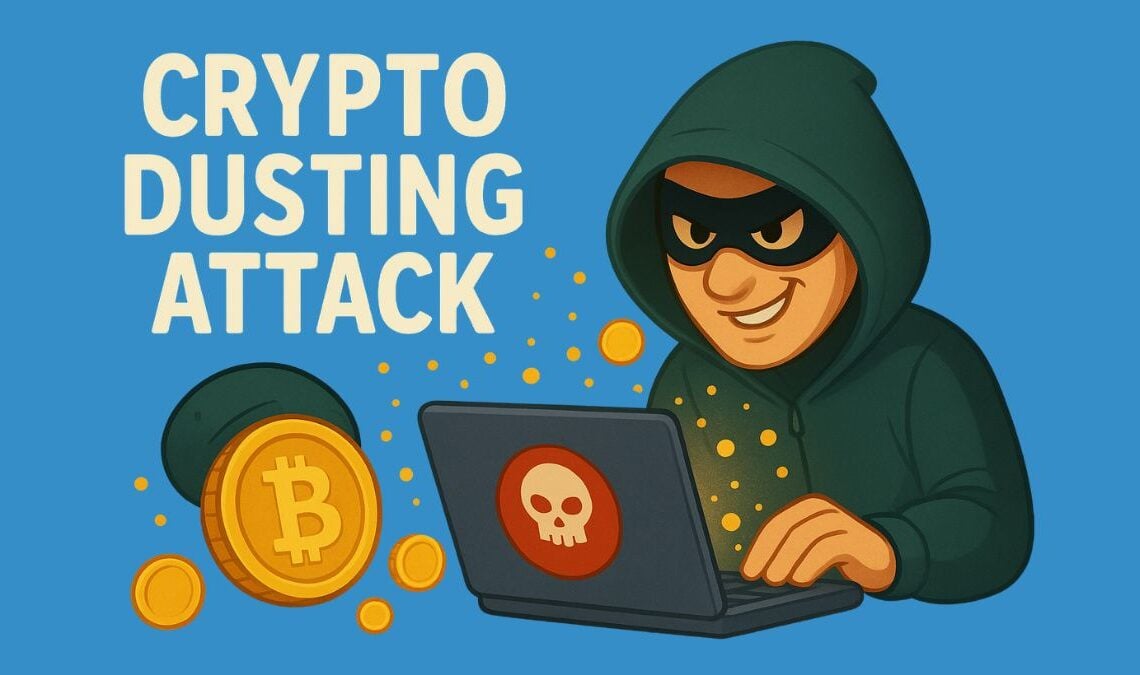If you’ve ever received a tiny amount of crypto from an unknown wallet, you might have asked yourself: What is a crypto dusting attack and why did this happen?
These seemingly harmless microtransactions—often worth just a few cents—can actually be the first step in a much more dangerous game of blockchain surveillance and privacy erosion. In 2025, as crypto adoption increases, so does the sophistication of malicious tactics like dusting. Let’s break it down.
Understanding Dusting Attacks in Crypto
At its core, a dusting attack is a method used by malicious actors to de-anonymize wallets. Here’s how it works:
- The attacker sends a minuscule amount of crypto (called “dust”) to a large number of wallet addresses.
- Once recipients spend funds from these wallets, the attacker tracks how the dust moves, using on-chain analysis tools.
- The goal is to link multiple wallets to the same owner or to specific IPs, exchanges, or real-world identities.
While dusting began with Bitcoin, it’s now common across Ethereum, BNB Chain, Polygon, and even Layer 2 networks.
Why Attackers Use Dusting Tactics
Dusting attacks aren’t about stealing money—dust is worth almost nothing. Instead, they’re about surveillance and data aggregation. Here’s why someone might launch a dusting attack:
- To unmask anonymous traders or whales.
Exchanges or analytics firms may use dusting for KYC or AML tracking purposes. - To set up phishing or blackmail schemes.
Once a wallet identity is exposed, attackers might target users with tailored scams. - To identify wallets with large balances.
Dust recipients may become targets for more advanced attacks.
Real-World Example: Bitcoin and the Rise of Chain Surveillance
In one of the earliest publicized cases, Binance users in 2018 received unexpected dust transactions, later confirmed as part of an internal chain analysis experiment. Since then, dusting has become a more common vector for both white-hat analytics and black-hat tracking.
More recently, some DeFi participants on Ethereum Layer 2s have reported dust deposits followed by phishing airdrops, luring users into signing malicious contracts.
How to Protect Yourself from Crypto Dusting Attacks
Even though dusting doesn’t involve direct fund loss, the privacy risks are significant. Here’s how to stay safe:
- Don’t interact with unknown tokens or dust transactions.
Simply ignore them. Moving or combining dust with other funds creates a trackable link. - Use hierarchical-deterministic (HD) wallets.
These generate a new address for every transaction, making tracking more difficult. - Enable coin control features.
Some wallets let you select which UTXOs (unspent outputs) to use, allowing you to exclude dust manually. - Use privacy wallets or mixers (where legal).
Wallets like Wasabi offer enhanced privacy tools, though they should be used responsibly and in compliance with local laws. - Stay alert to fake airdrops.
Never connect your wallet to unknown dApps or sign messages unless verified.
Final Thoughts: Why Crypto Privacy Still Matters in 2025
As crypto matures, data harvesting and wallet surveillance are becoming new battlegrounds. Understanding what is a crypto dusting attack—and recognizing it early—can help users preserve both their security and anonymity.
Even though blockchains are transparent by design, that doesn’t mean you have to give up your privacy. With the right tools and awareness, you can navigate this new financial world safely.

















